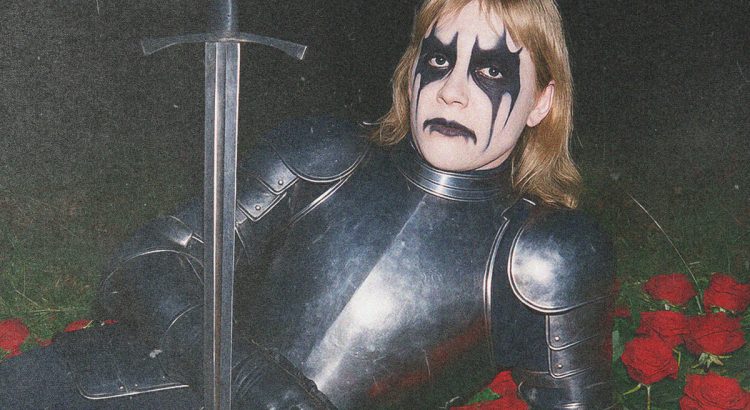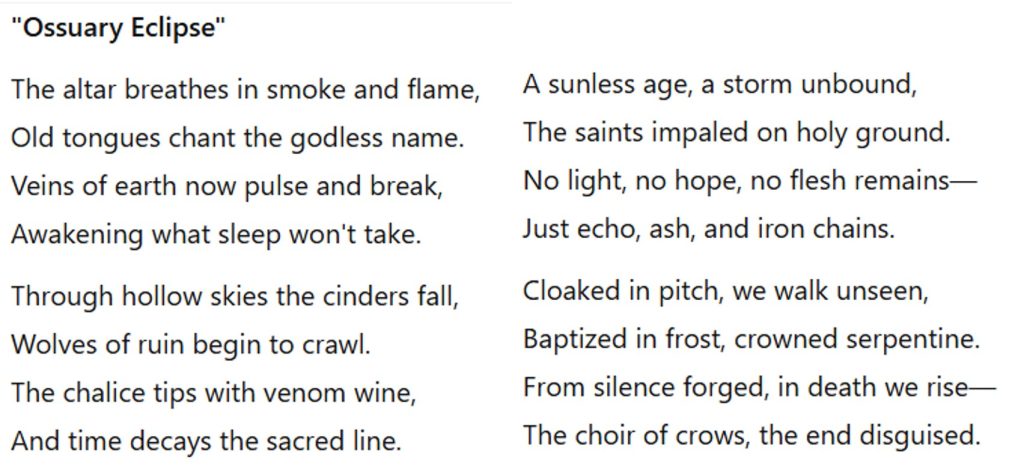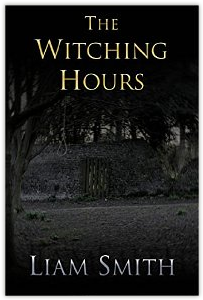Is it Draugveil AI? At this point, the Ukranian underground ‘band’ needs little introduction. Three weeks ago, that album cover dropped and magnetised the derision of kvltist and casj metalhead alike, as well memelords far outside the metalsphere. The brave and curious gave it a listen and found that, well, actually, there might be something meritious there after all. And then the real twist hit. The suggestion that Cruel World of Dreams and Fears, Draugveil’s rose-wreathed debut LP, was AI-generated. This one has hit hard for me, as we shall explore below. But first, we gotta get to the bottom of this. Is Draugveil AI?
That album art
That’s it. Gaze into the eyes of Draugveil – if you can tear your eyes from that golden hair! Those painted lips! That strangely erect sword! I’ll level with you, I’m not averse to the energy this thing gives off. Black metal has been ripe for mockage since the very start; all that self-serious corpsepaint, woodsy wandering and cod-Latin. Draugveil is just picking up on the dark medieval strand in its DNA, the element of the genre that sounded like the wind sweeping castles from cold European microkingdoms, or the snapping of frost-weighed banners, and added that missing chivalric aesthetic. Sure, there’s an unmistakeable whiff of self-parody about it, a note of SHOUT (tell me I’m not the only one who remembers that), but that’s just a side effect of what is, inherently, a very do-it-yourself genre of extreme metal which champions rawness and lack of polish.
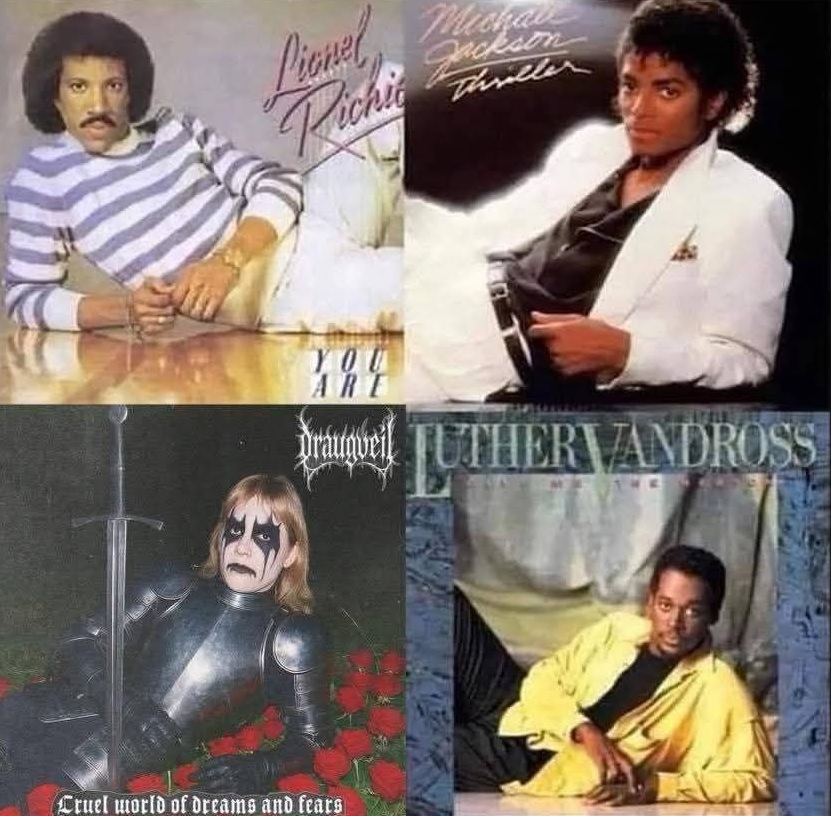
Certainly, it caught the internet’s attention, and its 55.3K Spotify listeners (as of 5th July) evidences its impact (for reference, Emperor have 112k, Darkthrone 158k, Mayhem 308k – but they’ve had three decades to ensnare listeners, not three weeks). Of course, with its exposure came cries of AI. So what do we think. Is Draugveil’s cover AI?
Under the microscope
I mean, let’s get one thing out the way – those roses aren’t real, but of course they’re not. Black metallers won’t call it cosplay but that’s what their genre is all about – dressing up in Orc armour and marching through dungeons and forests. I don’t believe for a second that Draugveil’s cover intends to be anything other than a picture of a guy dressed up as a knight. I repeat. This cover isn’t a picture of a knight on a bed of roses. It’s a picture of a guy dressed up as a knight on a bed of roses. Now that’s out the way, what do our elf-eyes see? I’ve heard attention drawn to the way the roses are standing up, the way the sword sticks up so passionately despite what is surely only an inch of steel (or plastic) anchoring it to the ground. Some confusing wrinkles under the eyes. All circumstantial. Yeah, AI could have generated this. It might not have done. Certainly, it won’t be the first album to have AI-generated art. But isn’t it the music that matters?
Those lyrics
Lyrics aren’t the main concern in metal. Perhaps because, at least in extreme circles, they’re so often shrieked, growled, howled and screamed, most listeners don’t care too much what’s coming out a vocalist’s mouth. Myself, I like Dani Filth’s lyricism but it’s usually the riffs and double-kicks that keep me coming back to metal. But with Draugveil, they give us another lens through which to aim our scrutiny and ask: is it cake? I mean, AI?
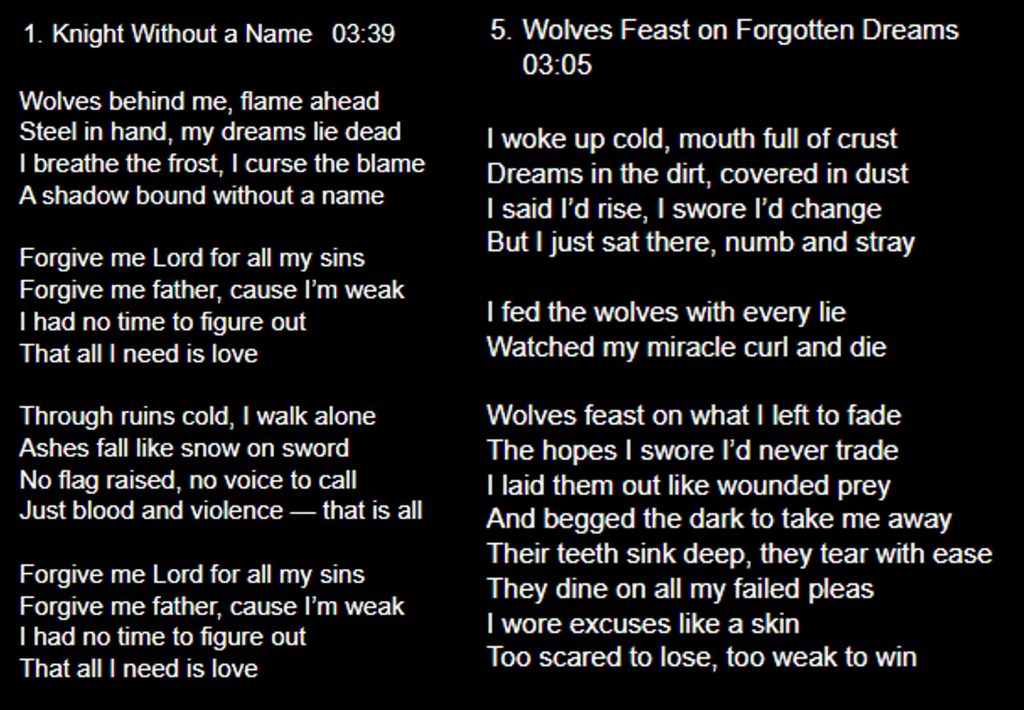
Let’s take album opener Knight without a Name. Rhyming couplets, a strong sense of meter in *swills glass* iambic tetrameter, for the most part. A strange dash at one point – plenty of medievally metallic keywords, too. Moonlit Resurrection: rhyming couplets, more iambic. By the time we reach halfway mark Wolves Feast on Forgotten Dreams, its apparent this formula ain’t changing. Also, each couplet kind of works in isolation – that is, each song is just a string of interchangeable rhyming couplets. Have you ever got ChatGPT to write a poem? This is what it does. Rhyming couplets with eight syllables a line, hitting plenty of low-hanging vocabulary about the subject.
You know what. I’m going to go out on a limb and say Draugweil’s lyrics are AI-generated. I mean, again, it’s circumstantial. But they sure as hell feel AI, and they match what ChatGPT is chucking out. But lyrics are only part of the music, right? There’s the actual music to consider, right?
That music
One of the reasons this controversy has blown up is, I think, because this music has actually landed for lots of listeners. It’s kind of catchy in its way. It’s built on actual, if simple, chord progressions rather than dissonant riffs. It kind of makes you feel things as you listen. The instrumental interludes are analogue nostalgia-bait and the songs themselves are svelte, without all the wall-of-sound repetition you might expect of black metal, frequently punctuated with pretty pianos. Could it be that this new spin on a tired formula is AI? What does that mean to our tastes in music?
I gave Cruel World of Dreams and Fears a spin after clocking the artwork and wanting to hear the atrocity surely contained within. I found that the more I listened the more I liked it, for all the reasons above. Most of all, it was an undemanding listen. Then came the AI accusations. Suddenly, my experience became corrupted. What might it mean if I’d emotionally connected to something which I’d taken as one musician’s vision but was, in fact, a sterile slab of AI slop?
The implication
For one thing, it opens a discussion about how much of our enjoyment is our choice and how much is decided for us. Right away, knowing that this music might be AI produced killed my enjoyment of it – but should it have done? It was still the same music, after all. It’s like when your favourite author becomes persona non grata. Aside from the ‘is it still ok to like them?’ question, there’s the ‘my experience is changed because of something I now know’ factor. It can be a positive one. I think the band Rush come across as stand-up good guys, and I’m sure that enhances my appreciation of their music. It’s also the reason metal bands with hot female vocalists gain traction despite operating in a non-mainstream genre. But it can also sour our experiences with things we’ve enjoyed, and things we haven’t had a chance to judge without bias.
Less philosophising, more analysing
Let’s take a look under the bonnet of Cruel World of Dreams and Fears and see if we can’t settle this thing. First off, the sound of it. Hearsay informs us that some of the instruments might be programmed. I think this is quite probable and, in the case of the drums, quite likely. Drum machines have been a part of metal of all flavours for many a year, especially since it can be difficult for one man bands to record a drumset in their mum’s basement. But drums aren’t tuned; they rarely contribute emotional trajectory to a song. What about the rest of it?
Well, it’s hard to say. There are some very synthetic tremolo sounds in Soiltear and Vortex which sound pretty MIDI. But you can run a guitar through myriad configurations of pedals to get near enough any sound in the world. Who’s to say that isn’t what Draugveil was going for? On the flipside, realistic sound engines can program guitars, strings and keys and sound pretty bang on. especially when they’re programmed by someone with a knowledge of that instrument and how a real person physically plays it. Should we condemn a metal album for being programmed? Electronic musicians have been producing albums without playing any instruments for years – but then, they aren’t representing a style that prides musicianship and realisation of creative vision through music.
The synth in dungeon synth
The more I listen, the more I spot little details that point more strongly towards computer assistance, if not outright AI generation. I like the china cymbal accents in Knight without a Name (why has no one come up with that one before?), but, lo: they there are again later in the album as if by the grace of copy and paste. It’s circumstantial but, for an album already under fire for being AI generated, it could be damning. Even if we zoom out to the macro scale: really, what black metal album looks like this? 10 tracks, 30 minutes, average song length three and a half minutes. It’s like someone knows all the tropes of black metal but only how to apply them to more concise template. Suss. Anyway, where does it end? AI artwork, no problem. AI-assisted lyrics? Okay, but as long as the music is real. AI backing track, but human vocals? Feeling sketchy now.
So what does Draugveil say?
Not a lot. Not a lot at all – although, allegedly, they’ve sent Black Metal Promotion, the YouTube platform that hosted the album stream, screenshots of the album’s audio files[source]. Black Metal Terror, a Facebook group that has supported the album, pushed for proof that there’s a man behind the music rather than a machine, finally being told after four message attempts ‘Let the people judge’[source] – not a glowing endorsement of authenticity. Neither is the out-of-the-blue album drop, the lack of preceding singles and lack of online presence for Draugweil themselves.
If it is AI though, why? Black metal, or most any music without clean vocals, is never going to top the charts. That said, an artist with 55k Spotify listeners might be expected to net $900-1000 a month. Imagine one person with a stable of AI albums, their streams steadily building, and all without going to the tedious bother of actually recording anything. Perhaps it’s easier to crack the metal underground than to go up against pop heavyweights with their strangleholds on the industry? A sort of better to reign in hell sort of option?
Cruel World of AI Slop vs Artistic Expression
I wrote this article to collate some of the developments in the strange case of Draugveil, open up a discussion about it and reconcile some of my own feelings on sitch. At this stage, no one has confirmed for sure whether Draugweil is AI or not. My heart – which had previously connected with this music, this expression of artistic intent – wants to say no. But my head… it kind of tells me this might the work of a cold machine. Then why did it gel so quickly with me? I play a few instruments; I listen to a buttload of music. I know my stuff. Was I prejudiced to enjoy this because of the controversy around the cover? Or did AI write a better (or at least, more idiosyncratic) BM album than anyone else this year?
Look, I’m a writer. This article is about music but, the truth of it is, I’m worried about the implication for writing too. I’m not worried about AI producing better novels than real authors can – not yet – but I’m concerned that artists’ work is going to be intrinsically linked to their online presence. That they’re going to have to prove their existence to be taken seriously, and that an author’s online presence should have a bearing on the perceived quality of their work. Or simply that audiences without critical thought could brand work as AI assisted, or be completely hoodwinked by real slop that obviously is.
Is Draugweil AI? I’ve given my two cents. Let me know yours.
